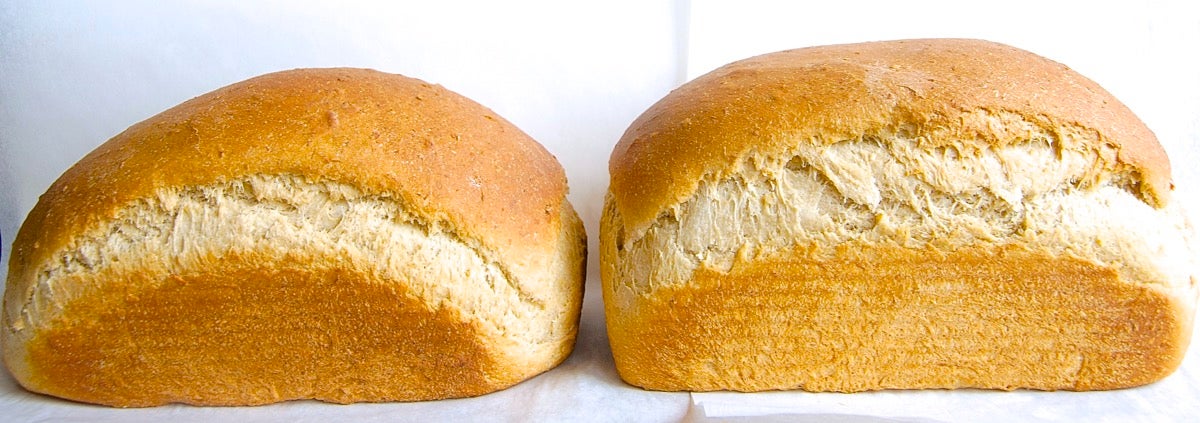


You’ve been baking yeast bread, but you’re not happy with the look of your loaves. They’re not the high-rising, domed beauties you expect, but instead are short and squat, producing slices that are more horizontal than vertical.
The solution to your problem may be as simple as choosing the right bread pan.
Bread loaf pans come in many sizes — from tiny minis for your holiday gift loaves to king-sized pain de mie pans capable of producing 2 1/2-pound loaves.
But the vast majority of yeast bread recipes call for one of two basic bread pan sizes: 9" x 5" or 8 1/2" x 4 1/2". Both of these bread pans are generally 2 1/2" tall; sometimes, they’re interchangeably referred to as a “loaf pan.”
That 1/2" difference on each side may not seem like a big distinction — viewed alone, these bread pans are hard to tell apart. Side by side, you'll notice the slight size variation.
But that 1/2" difference in each dimension translates to a 15% variation in capacity. In many cases, it means the difference between a nicely domed bread loaf and one that’s barely managed to crest the rim of the pan. So if a bread recipe calls for an 8 1/2" x 4 1/2" loaf pan, as many yeasted sandwich breads do, it’s important to use that exact size. (9" x 5" pans, meanwhile, are often used for quick breads.)
Let's bake our Classic Sandwich Bread to demonstrate.
We’ll start with a bowl of risen dough. It’s divvied exactly (right down to the last gram) between the bread pans and left to rise.

You can see that the dough in the 8 1/2" x 4 1/2" bread pan (right) is slightly taller, which makes sense; it has less volume to fill before peeking over the pan's rim.
The loaves get baked, and the one in the smaller bread pan definitely rises higher. In fact, it creates that classic mushroom-top shape that’s characteristic of sandwich breads.
To be fair, the 9" x 5" loaf on the left, though shorter, looks perfectly acceptable. You’ll still get nice bread, even if it has a different shape.
It's when you bake loaves that use a bit less flour than normal (under 3 cups) or whole-grain loaves that you might notice a more significant difference.
This is our Vermont Whole Wheat Oatmeal Honey Bread. It rises just slightly less high than our Classic Sandwich Bread. But see what a nice shape the 8 1/2" x 4 1/2" bread pan gives it (right), compared to the 9" x 5" ski-slope loaf on the left? That loaf’s heel ends won’t make very nice sandwiches.
See our complete guide to baking pans for more essential baking guidance >>
While there’s no hard-and-fast rule for “use this amount of dough in this size bread pan for the perfectly shaped loaf,” there are some basics you should know. First and foremost: If the recipe calls for a specific size bread loaf pan, use it! If the recipe doesn’t call for a specific size pan, but simply says “loaf pan,” use the following guidelines.
Do you have questions about yeast bread – or any other baking subject? Our Baker's Hotline is ready to help: 855-371-2253.
Cover photo by Mark Weinberg; food styling by Liz Neily.







